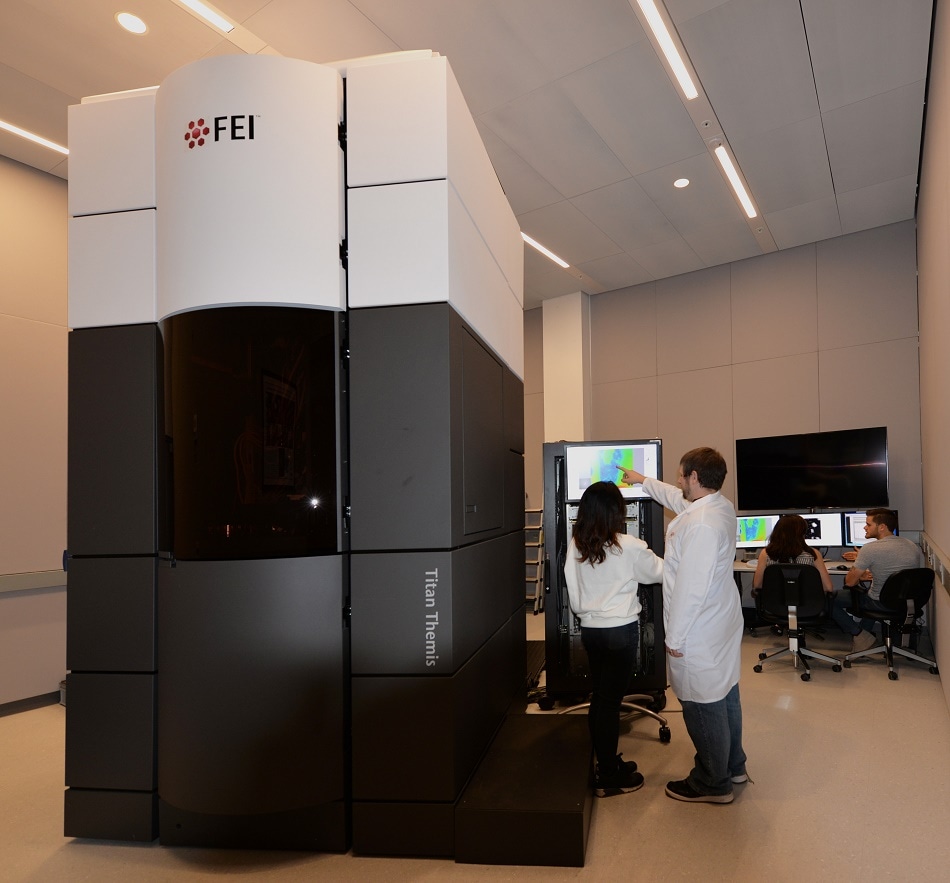Dec 15 2016
 IAC Titan Thermis Lab
IAC Titan Thermis Lab
Powerful microscopes help researchers understand innovative material structures at the atomic scale.
The Princeton Institute for the Science and Technology of Materials (PRISM) recently unveiled its new Micro/Nano Fabrication Laboratory (MNFL) and Imaging and Analysis Center (IAC) facilities, which are now home to a powerful suite of advanced analytical instrumentation from Thermo Fisher Scientific.
The instruments will be used by researchers to investigate the structure of novel materials, including nanoparticles and quasi crystals that are critical to the development of alternative energy technologies such as batteries.
We are very excited about the opening of PRISM’s facilities in the newly-constructed Andlinger Center for Energy and the Environment – which is one of the most innovative research centers I’ve seen, Princeton has been a long-term Thermo Fisher customer and its suite of sophisticated imaging & analysis equipment will provide a multi-modal workflow designed to allow scientists to see the structure of materials from the macro-, to the micro-, and even atomic-scales.
Mike Shafer, President, Materials and Structural Analysis, Thermo Fisher
Craig Arnold, director of PRISM and a professor of mechanical and aerospace engineering, said, “Having a central facility for characterizing and fabricating materials is absolutely critical for many areas of research. It’s not just materials science – it’s energy, it’s environment, it’s health, it’s security.”
PRISM is now home to a Thermo Scientific K-Alpha+ X-ray Photoelectron Spectrometer (XPS), as well as a number of electron microscopes, including: Titan Themis and Talos scanning/transmission electron microscopes (S/TEMs), Helios G3 DualBeam, Verios extreme high resolution scanning electron microscope (XHR SEM), Quanta SEMs, and a Titan Krios Cryo-TEM. The XPS provides chemical and elemental composition of the topmost atomic layers of a material, while the suite of electron microscopes provides a multi-scale analysis workflow, including sample preparation, allowing researchers to visualize the three-dimensional structure of a material down to the scale of individual atoms.
The new IAC was designed to enable conditions for atomic-scale imaging. The fabrication area includes a very large clean room facility that almost entirely eliminates dust particles that could interfere with nanometer-sized structures. Even the heating and cooling system introduces incoming air in smooth sheets that move evenly from ceiling to floor to avoid air currents that jostle the microscopes.
PRISM’s new IAC and MNFL are open to researchers across multiple disciplines within Princeton University. External individuals, companies and institutions can also book time on the machines through online reservation systems.